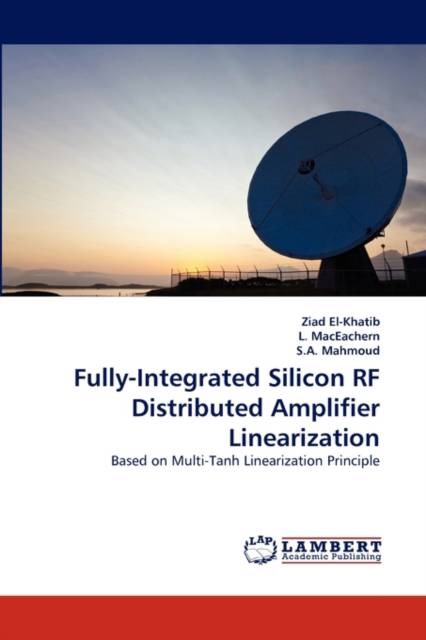
- Afhalen na 1 uur in een winkel met voorraad
- Gratis thuislevering in België vanaf € 30
- Ruim aanbod met 7 miljoen producten
- Afhalen na 1 uur in een winkel met voorraad
- Gratis thuislevering in België vanaf € 30
- Ruim aanbod met 7 miljoen producten
Zoeken
Fully-Integrated Silicon RF Distributed Amplifier Linearization
Based on Multi-Tanh Linearization Principle
Ziad El-Khatib, L Maceachern, S a Mahmoud
Paperback | Engels
€ 67,45
+ 134 punten
Omschrijving
Driven by the demand of low-cost base stations deployment and enhanced micro-cellular coverage and capacity, Radio-over-fiber (RoF) has attracted much research attention as a convenient way to distribute RF signals to base stations and to subscribers. In RoF systems, a highly-linear optical transmitter is necessary to achieve the required signal dynamic range. Fully-integrated design techniques are required to address linearity improvements for RoF transceivers. Nonlinearities in wireless communications are responsible for a phenomena that degrades system's performance and must be minimized. A major design challenge for broadband amplifiers is the stringent linearity requirement over a wide bandwidth range, nonlinearities cause harmonics and unwanted intermodulation products which degenerate the transceiver performance. An ideal amplifier should have a linear relationship between the input and output signal. However this is not the case in a practical amplifier. As the input signal power level increases, this relationship becomes non-linear and causes distortion in the output signal. External linearization circuitry can be added to the amplifier to compensate for the non-linearity.
Specificaties
Betrokkenen
- Auteur(s):
- Uitgeverij:
Inhoud
- Aantal bladzijden:
- 180
- Taal:
- Engels
Eigenschappen
- Productcode (EAN):
- 9783838382357
- Verschijningsdatum:
- 13/07/2010
- Uitvoering:
- Paperback
- Formaat:
- Trade paperback (VS)
- Afmetingen:
- 152 mm x 229 mm
- Gewicht:
- 272 g

Alleen bij Standaard Boekhandel
+ 134 punten op je klantenkaart van Standaard Boekhandel
Beoordelingen
We publiceren alleen reviews die voldoen aan de voorwaarden voor reviews. Bekijk onze voorwaarden voor reviews.











